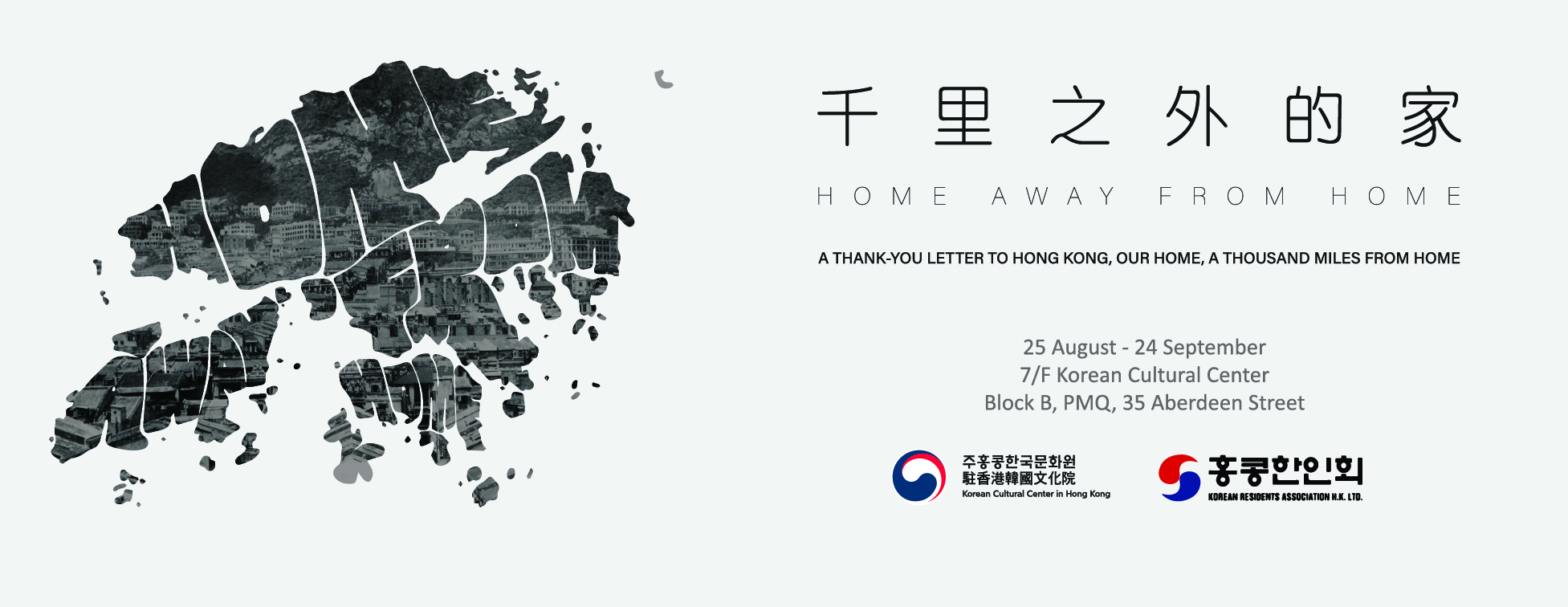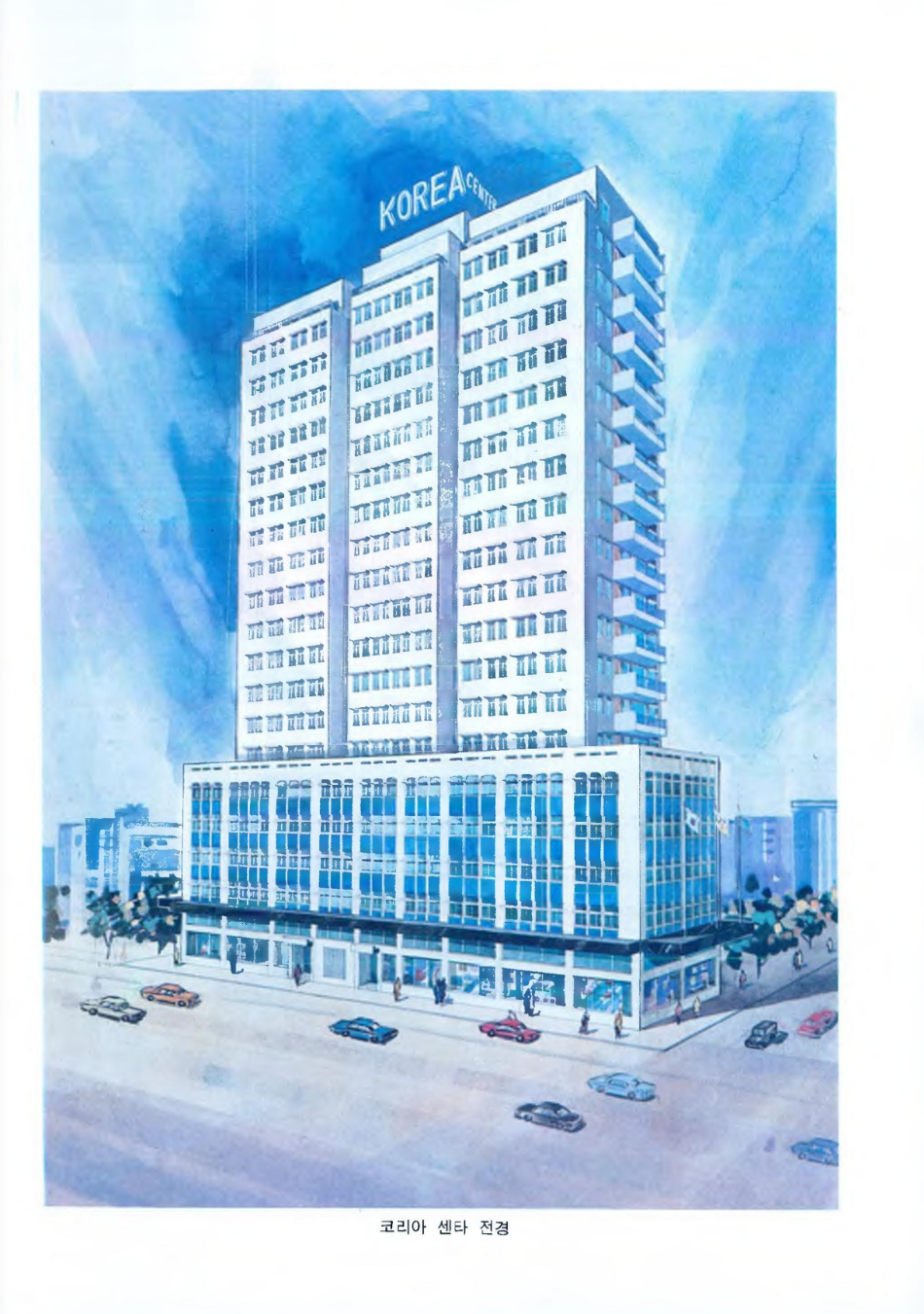[Exhibition] Home Away From Home : A Thank You Letter to Hong Kong

[Exhibition] Home Away From Home : A Thank You Letter to Hong Kong
The Korean Cultural Center, with the Korean Residents Association, presents the photography exhibition "Home Away From Home: A Thank you Letter to Hong Kong" illustrating the history and exchanges of the Korean community with Hong Kong, a home away from home. The exhibition will be held in the 7/F of Korean Cultural Center, PMQ, from the 25th of August to the 24th of September.

[1-2] Finding Home
The earliest Korean community in Hong Kong began in the 1940s when Koreans residing in different regions came to Hong Kong after the Korean liberation in 1945. Most were transiting on their way back to their newly-liberated homeland, but around 40 households remained in here in Hong Kong, creating the first Korean community.
(Photos showing Central and Victoria Peak, Central Post Office during the early 20th Century, from the Korean Residents Association Archives)
[3] Celebration (1966)
People pose for a group photograph after the Korean Liberation Day celebrations in 1966.[1] The Consulate-General to Hong Kong Mr. JIN Pil-sik (1923-2008) can be seen on the centre of the front row, to his right is the president of the Korean Residents Association Mr. LEE Rak-san (-1983). Another notable detail in the photograph is in the women’s dresses, whereas the men’s formal attire gives little away. the mix of Hong Kong style cheongsam, Korean traditional hanbok as well as some modern dresses indicate a complex intermingling of the Korean community in the Society of Hong Kong.
[4] Giving Back (1978)
The President of the Korean Residents Association, Mr. Hong Sun-taek presents a cheque to the Community Chest of Hong Kong (香港公益金), as a donation to Hong Kong from the Korean community. It was one of the first of the charitable activities and donations that the community has made, which continues even today hoping to return the favour to the home away from home.

Building Identities
In their home away from home, the Korean community developed unique intersectional identities, which were Korean in the core, but also influenced greatly by the primary place of residence, Hong Kong.
[1] The Korea Centre (1986)
The photograph here shows the Korean Residents Association office during the 1980s in the Korea Centre Building. The Korean Residents Association first purchased its office in Fairview Mansion (Causeway Bay) in 1962, then moved to the Korea Centre building in 1970, which housed the Korean Consulate-General as well as many other Korean organizations and the Korea Garden Restaurant which still operates nearby. The Association’s office has moved to Cosco Tower since 1999. The Korea Centre Building still stands in 119 Connaught Road, now known as Bauhinia Hotel.

The Korea Centre, 119 Connaught Road
[2] The Korean School (1986)
The photograph shows the graduation ceremony of the Korean School in 1986 with 50 students. The school was first founded in 1960 with two teachers and six students to teach Korean language to children of Korean parents in Hong Kong. The classes initially took place every Saturday in the Korean Consulate-General office in the old Man Yee Building (萬宜大廈). It had to be Saturday because the teachers had to push aside the office desks to make room for the Korean classes. The Korean School(한국학원) which is now known as the Korean Saturday School(홍콩한국토요학교), has around 500 students, and continues to help Korean children in Hong Kong learn better about their home. This 60-year-long project points to a strife to understand home, while also belonging here in the Hong Kong, away from home. The Korean School and its mission would later become the founding objective of the Korean International School in Sai Wan Ho, founded in 1994 after decades of planning.
[3] Competing as Hong Kong Koreans (1984)
The photograph shows the Hong Kong team, composed of Korean residents in Hong Kong, in the 65th Korean National Sports Festival held in 1984. The sign says Korean Residents in Hong Kong(재홍콩동포, 在香港同胞) The Hong Kong residents team first participated in the 60th Festival in 1979 representing Hong Kong, and earned the second place among many other teams.
[4] Visiting Home (1984)
The photograph shows the 31-32nd president of the Korean Residents Association Mr. LEE Won-pyo ushering children onto a bus in Gimpo Airport. The banner on the bus says “Welcome, Hong Kong Children’s Educational Trip to Home.” The people appear to be preparing to return home to Hong Kong, after a short visit home. Like the Korean School, giving younger Korean children a clearer view of their identity was one of the main objectives of the Residents Association’s projects. It would become a mission and a challenge for many families abroad from home to find a sense of balance between the home from which they originate and the home in which they belong.

Making Exchanges
[1] ROKS Seoul in Hong Kong (1998)
As the first official visit to Hong Kong SAR, the Korean Navy Ship brought Korean Naval Academy cadets to Victoria Harbour[2]. One of the two ships, ROKS Seoul, that visited Hong Kong in 1998 has now been decommissioned, and renovated into “Seoul Battleship Park” open to all visitors in Han River Park, Seoul.
Visit: https://seoulbattleshippark.co.kr/

[2] Parade (1996)
Showing a then-rare scene of Korean performance on the streets of Hong Kong, this photograph shows Korean performers donning Korean traditional Hanbok, demonstrating Korean Fan Dance and Samulnori in the New Year’s Parade, 1996. The parade was held in Salisbury Road, Tsim Sha Tsui. The photograph was taken near the Tsim Sha Tsui Centre and the Kowloon Shangri-La Hotel. The Central Plaza building is visible in the background, and the pedestrian bridge in the photograph also still stands today.
[3-4] Bazaar (1997)
The Korean community has hosted countless concerts, bazaar, and marketplace events, often to share Korean culture and raise funds for charitable causes in Hong Kong. People can be seen making and sharing Gimbap, a Korean picnic favourite, and sharing food and selling goods in KIS grounds. These series of events have become an important influence for the Korea Square event, a highlight Festive Korea event showcasing and promoting diverse fun aspects of Korean Culture.

The Documents
[1] The Declaration
This photograph shows the signatures of 28 founding members of the Korean Residents Association, signed on a piece of silk on the third lunar day of 1948, in Hong Kong Tai Tung Restaurant, now closed, on 234 Des Voeux Road. In the centre of the document, the first president of the association, Mr. JIN Tae-gyun, can be seen written in Hangul. This document would become the founding stone of the Korean Residents Association which would become formally registered in 1949. (Original on display at the Korean Residents Association)
[2-3] The Register
The two photographs show a part of the registration documents (cover and first page) for Korean Hong Kong residents in 1963. The pages are followed by personal information of the individual registrants, who state various reasons of coming to Hong Kong, like business, government work and finding family. This document would become the basis of a formal grand of residence by the Hong Kong government. The original 137 registrations including Mr. JIN Tae-gyun, is unfortunately lost and only this 1963 version remain today. (Original in the Korean Residents Association archives)
[1] Korean Residents Association in Hong Kong. 70 Years of Survival and Prosperity: Koreans in Hong Kong (Hong Kong, Korean Residents Association in Hong Kong, 2019), 16.
[2] Yeong-jun Hahm 함영준, “한국軍艦 홍콩반환후 첫 입항[Korean Navy Ship Enters Port for the First Time Since the Return of Hong Kong]“ Choson Ilbo, 3 Nov, 1998.
- attached file
